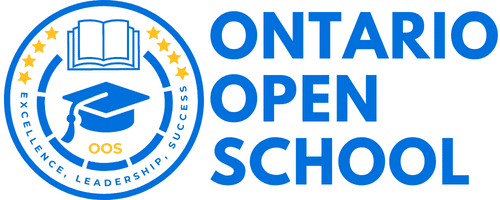- info@ontarioopenschool.com
- 647-494-4499
-
Unit 100 - 29 Gervais Drive, North York, ON.
M3C 1Y9
Copyright 2024 Ontario Open School Inc. All Rights Reserved.
This course provides an overview of the importance of international business and trade in the global economy and explores the factors that influence success in international markets. Students will learn about the techniques and strategies associated with marketing, distribution, and managing international business effectively. This course prepares students for postsecondary programs in business, including international business, marketing, and management.
Unit Order | Unit Name | Suggested Time |
|---|---|---|
| Unit 1 | The Global Environment for Business
| 30 hours |
| Unit 2 | Business and Trade | 18 hours |
| Unit 3 | Factors Influencing Success in International Markets | 24 hours |
| Unit 4 | Marketing Challenges, Approaches, and Distribution | 24 hours |
| Unit 5 | World Markets and Careers | 14 hours |
| Final Evaluation 30% | Final Project Final Exam | 6 hours 2 hours |
| Total | 110 Hours |
A wide variety of instructional strategies are used to provide learning opportunities to accommodate a variety of learning styles, interests and ability levels. These strategies include, but are not limited to:
Additional Teaching/Learning Strategies for International Students
Purpose
The primary purpose of assessment is to improve student learning. Assessment relates directly to the expectations for the course.
A variety of assessments for and as learning are conducted on a regular basis to allow ample opportunities for students to improve and ultimately demonstrate their full range of learning and for the teacher to gather information to provide feedback. Assessment tasks relate to the success criteria set out in lesson plans. Success criteria allow students to see what quality looks like.
Evaluation is the process of judging the quality of student work in relation to the achievement chart categories and criteria and assigning a percentage grade to represent that quality. Evaluation is based on gathering evidence of student achievement through:
Assessment for Learning – we provide feedback and coaching. Assessment FOR Learning is the process of seeking and interpreting evidence for the use of learners and their teachers to decide where the learners are in their learning, where they need to go, and how best to go there.
Assessment as Learning – we help students monitor progress, set goals, reflect on their learning
Assessment AS Learning is the process of the explicit fostering of students’ capacity over time to be their own best assessors, but teachers need to start by presenting and modeling external, structured opportunities for students to assess themselves.
Assessment of Learning – we use assessments to provide evaluative statements about student achievement. Assessment OF Learning is the assessment that becomes public and results in statements of symbols
(marks/grades/levels of achievement) about how well students are learning. It often contributes to pivotal decisions that will affect students’ future.
Assessment & Evaluation Components
There are four levels of achievement for students who are passing this course:
Level 1 – (50-52%) Level 3 – (70-72%)
Level 1 (53-56%) Level 3 (73-76%)
Level 1+ (57-59%) Level 3 + (77-79%)
Level 2 – (60-62%) Level 4 – (80-86%)
Level 2 (63-66%) Level 4 (87-94%)
Level 2 + (67-69%) Level 4 + (95-100%)
Level 3 is the provincial standard for student achievement.
A wide range of assessment strategies (tests, portfolios, journals, essays, presentations, observation, conferencing and projects), combined with an array of instrument tools (including detailed marking schemes, checklists, rubrics and exemplars), is used in order to measure student achievement of overall course expectations.
Portfolio Assessment
A Portfolio Log will be kept by each group, containing selected documents related to a specific trade relationship. The portfolio requirements will be introduced at the beginning of the course. The students will be supplied with a portfolio checklist (Appendix A). The checklist becomes a formative assessment tool for the students.
The portfolio has a clear purpose: to accumulate student work for the Final Project. Students will need teacher direction on which pieces of work are to be used. The portfolio is a tool to store and organize student work. The teacher and students establish the form the portfolio will take and select the contents for the portfolio (rough drafts, best work or work that needs revisions, school material or material from outside the school). At the end of each unit, the teacher/students determine the work to be placed in the portfolio
Resources
Growing Success: Assessment, Evaluation and Reporting in Ontario Schools (2010)
http://www.edu.gov.on.ca/eng/policyfunding/growSuccess.pdf
International Business, Canada and Global Trade, Schultz, Notman & Hernder. Thomson & Nelson, January, 2003
Definitive Guide Series, Royal Bank of Canada
Magazines& Newspapers:
Local and international newsprint
Canadian and international trade and business
Video: The World of Business, Video Series
Grading
Weighting of categories
| Knowledge/Understanding | Thinking/Inquiry | Communication | Application |
| 25% | 25% | 25% | 25% |

Course Grade | Grade 12 |
|---|---|
Course Code | BBB4M |
Course Category | Social Sciences and Humanities |
Course Type | University/College Preparation |
Course Delivery | Online |
Course Duration | 8hrs |
Course Credit | 0 |
Copyright 2024 Ontario Open School Inc. All Rights Reserved.
